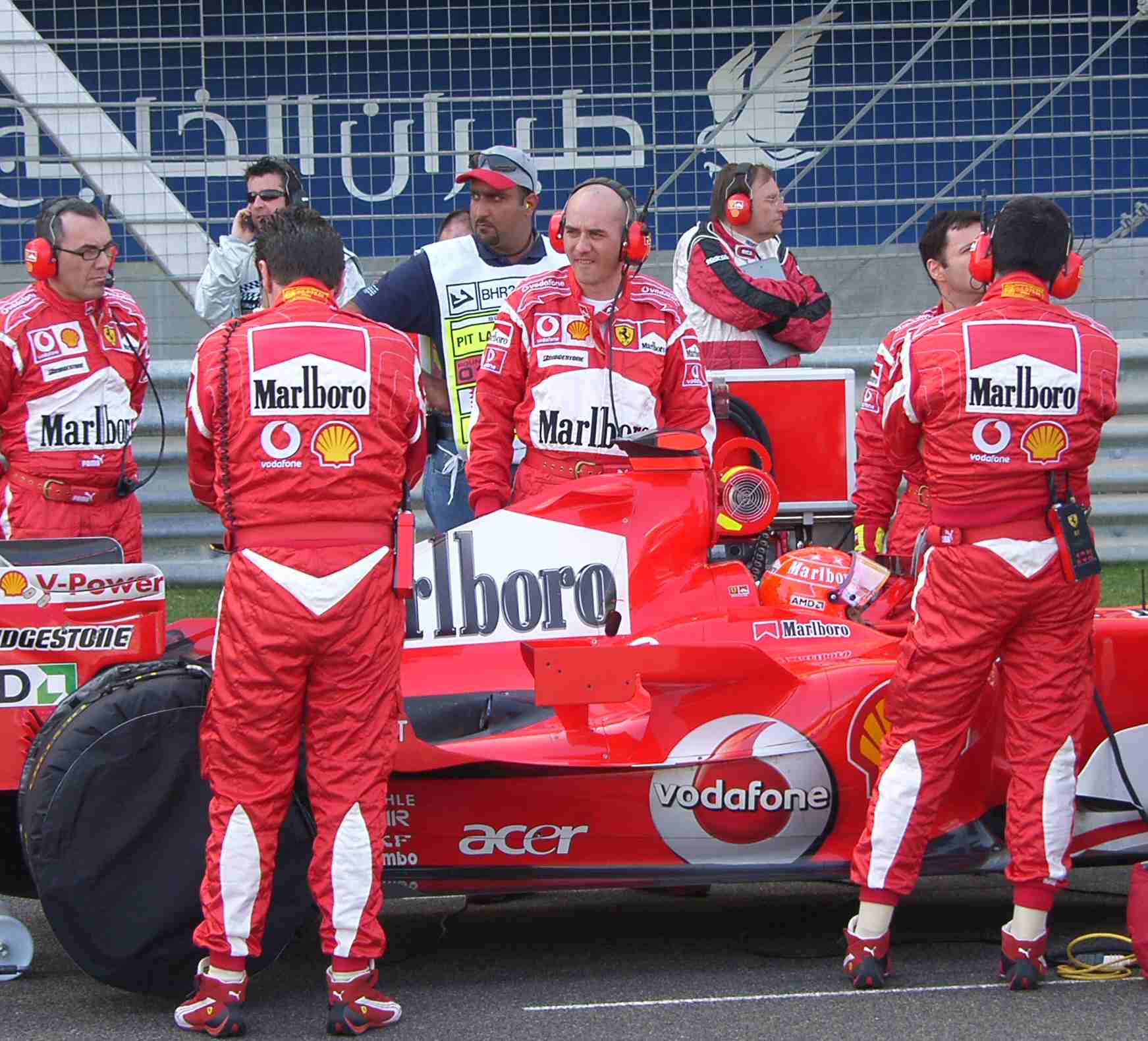|
Advertising Adstock
Advertising adstock or advertising carry-over is the prolonged or lagged effect of advertising on consumer purchase behavior. Adstock is an important component of marketing-mix models. The term "adstock" was coined by Simon Broadbent. Adstock is a model of how the response to advertising builds and decays in consumer markets. Advertising tries to expand consumption in two ways; it both reminds and teaches. It reminds in-the-market consumers in order to influence their immediate brand choice and teaches them to increase brand awareness and salience, which makes it easier for future advertising to influence brand choice. Adstock is the mathematical manifestation of this behavioral process. The adstock theory hinges on the assumption that exposure to television advertising builds awareness in the minds of the consumers, influencing their purchase decision. Each new exposure to advertising builds awareness and this awareness will be higher if there have been recent exposures and low ... [...More Info...] [...Related Items...] OR: [Wikipedia] [Google] [Baidu] |
Advertising
Advertising is the practice and techniques employed to bring attention to a Product (business), product or Service (economics), service. Advertising aims to present a product or service in terms of utility, advantages, and qualities of interest to Consumer, consumers. It is typically used to promote a specific good or service, but there are a wide range of uses, the most common being commercial advertisement. Commercial advertisements often seek to generate increased Consumption (economics), consumption of their products or services through "Branding (promotional), branding", which associates a product name or image with certain qualities in the minds of consumers. On the other hand, ads that intend to elicit an immediate sale are known as Direct marketing, direct-response advertising. Non-commercial entities that advertise more than consumer products or services include Political party, political parties, Interest group, interest groups, Religious organization, religious o ... [...More Info...] [...Related Items...] OR: [Wikipedia] [Google] [Baidu] |
Marketing-mix Models
Marketing Mix Modeling (MMM) is a forecasting methodology used to estimate the impact of various marketing tactic scenarios on product sales. MMMs use statistical models, such as multivariate regressions, and use sales and marketing time-series data. They are often used to optimize advertising mix and promotional tactics with respect to sales, revenue, or profit to maximize their return on investment. Using these statistical techniques allows marketers to account for advertising adstock and advertising's diminishing return over time, and also to account for carry-over effects and impact of past advertisements on the current sales campaign. Moreover, MMMs are able to calculate the magnitude of product cannibalization and halo effect. The techniques were developed by specialized consulting companies along with academics and were first applied to consumer packaged goods, since manufacturers of those goods had access to accurate data on sales and marketing support. Improved avai ... [...More Info...] [...Related Items...] OR: [Wikipedia] [Google] [Baidu] |
Behavioral Economics
Behavioral economics is the study of the psychological (e.g. cognitive, behavioral, affective, social) factors involved in the decisions of individuals or institutions, and how these decisions deviate from those implied by traditional economic theory. Behavioral economics is primarily concerned with the bounds of rationality of economic agents. Behavioral models typically integrate insights from psychology, neuroscience and microeconomic theory. Behavioral economics began as a distinct field of study in the 1970s and 1980s, but can be traced back to 18th-century economists, such as Adam Smith, who deliberated how the economic behavior of individuals could be influenced by their desires. The status of behavioral economics as a subfield of economics is a fairly recent development; the breakthroughs that laid the foundation for it were published through the last three decades of the 20th century. Behavioral economics is still growing as a field, being used increasingly in ... [...More Info...] [...Related Items...] OR: [Wikipedia] [Google] [Baidu] |
Marketing Effectiveness
Marketing effectiveness is the measure of how effective a given marketer's go to market strategy is toward meeting the goal of maximizing their spending to achieve positive results in both the short- and long-term. It is also related to marketing ROI and return on marketing investment (ROMI). In today's competitive business environment, effective marketing strategies play a pivotal role in promoting products or services to target audiences. The advent of digital platforms has further intensified competition among businesses, making it imperative for companies to employ innovative and impactful marketing techniques. This essay examines how various types of advertising methods can be utilized effectively to reach out to potential consumers Marketing expert Tony Lennon believes marketing effectiveness is quintessential to marketing, going so far as to say ''It's not marketing if it's not measured.'' History The concept of marketing effectiveness first came to prominence in the 1990 ... [...More Info...] [...Related Items...] OR: [Wikipedia] [Google] [Baidu] |
Television Advertisement
A television advertisement (also called a commercial, spot, break, advert, or ad) is a span of television programming produced and paid for by an organization. It conveys a message promoting, and aiming to market, a product, service or idea. advertising, Advertisers and marketing, marketers may refer to television commercials as TVCs. Advertising revenue provides a significant portion of the funding for most privately owned television networks. During the 2010s, the number of commercials has grown steadily, though the length of each commercial has diminished. Advertisements of this type have promoted a wide variety of goods, services, and ideas ever since the early days of the history of television. The viewership of television programming, as measured by companies such as Nielsen Media Research in the United States, or Broadcasters' Audience Research Board, BARB in the UK, is often used as a metric for television advertisement placement, and consequently, for the rates which ... [...More Info...] [...Related Items...] OR: [Wikipedia] [Google] [Baidu] |
Consumer
A consumer is a person or a group who intends to order, or use purchased goods, products, or services primarily for personal, social, family, household and similar needs, who is not directly related to entrepreneurial or business activities. The term most commonly refers to a person who purchases goods and services for personal use. Rights "Consumers, by definition, include us all", said President John F. Kennedy, offering his definition to the United States Congress on March 15, 1962. This speech became the basis for the creation of World Consumer Rights Day, now celebrated on March 15. In his speech, John Fitzgerald Kennedy outlined the integral responsibility to consumers from their respective governments to help exercise consumers' rights, including: *The right to safety: To be protected against the marketing of goods that are hazardous to health or life. *The right to be informed: To be protected against fraudulent, deceitful, or grossly misleading information, adverti ... [...More Info...] [...Related Items...] OR: [Wikipedia] [Google] [Baidu] |
Fast-moving Consumer Goods
Fast-moving consumer goods (FMCG), also known as consumer packaged goods (CPG) or convenience goods, are products that are sold quickly and at a relatively low cost. Examples include non-durable household goods such as packaged foods, beverages, toiletries, candies, cosmetics, over-the-counter drugs, dry goods, and other consumables. Fast-moving consumer goods have a high inventory turnover and are contrasted with specialty items, which have lower sales and higher carrying charges. Many retailers carry only FMCGs, particularly hypermarkets, big box stores, and warehouse club stores. Small convenience stores also stock fast-moving goods; the limited shelf space is filled with higher-turnover items. Characteristics The following are the main characteristics of FMCGs: * From the consumer perspective ** Frequent purchases ** Low engagement (little or no effort to choose the item) ** Low prices ** Short shelf life ** Rapid consumption * From the marketer perspective ... [...More Info...] [...Related Items...] OR: [Wikipedia] [Google] [Baidu] |
Gross Rating Point
In advertising, a gross rating point (GRP) measures the size of an audience that an advertisement impacts. GRPs help answer ''how often'' "must someone see it before they can readily recall it" and "how many times" does it take before the desired outcome occurs. Overview Gross rating points are a measure of the impact by a campaign using a specific Media (communication), medium or schedule. It quantifies Cost per impression, impressions as a percentage of the target population, multiplied by Frequency (marketing), frequency. This percentage may be greater, or in fact much greater, than 100. Target rating points express the same concept, but with regard to a more narrowly defined target audience.Farris, Paul W.; Neil T. Bendle; Phillip E. Pfeifer; David J. Reibstein (2010). ''Marketing Metrics: The Definitive Guide to Measuring Marketing Performance.'' Upper Saddle River, New Jersey: Pearson Education, Inc. . The Marketing Accountability Standards Board (MASB) endorses the definiti ... [...More Info...] [...Related Items...] OR: [Wikipedia] [Google] [Baidu] |
Least Squares
The method of least squares is a mathematical optimization technique that aims to determine the best fit function by minimizing the sum of the squares of the differences between the observed values and the predicted values of the model. The method is widely used in areas such as regression analysis, curve fitting and data modeling. The least squares method can be categorized into linear and nonlinear forms, depending on the relationship between the model parameters and the observed data. The method was first proposed by Adrien-Marie Legendre in 1805 and further developed by Carl Friedrich Gauss. History Founding The method of least squares grew out of the fields of astronomy and geodesy, as scientists and mathematicians sought to provide solutions to the challenges of navigating the Earth's oceans during the Age of Discovery. The accurate description of the behavior of celestial bodies was the key to enabling ships to sail in open seas, where sailors could no longer rely on la ... [...More Info...] [...Related Items...] OR: [Wikipedia] [Google] [Baidu] |
Adstock2
''For the municipality in Quebec, see Adstock, Quebec'' Adstock is a village and civil parish about northwest of Winslow and southeast of Buckingham in the Aylesbury Vale district of Buckinghamshire. The 2001 Census recorded a parish population of 415 reducing to 363 at the 2011 Census. There are remains of a Roman road in the village. In the divisions of England that took place between AD 613 and 1017, Buckinghamshire was divided into eight hundreds. The manor of Adstock originally formed part of the Votesdune Hundred, then merged into the Ashendon Hundred and was finally absorbed into the Buckingham Hundred. At that time it was surrounded by the Bernwood, one of the most important Royal Forests. At the end of the 10th century, Adstock formed a portion of the Lands of Godwine, Earl of Kent and his second wife Gytha Thorkelsdóttir. After the Norman conquest of England, its name was recorded in the Domesday Book of 1086 as ''Edestoche'' which is Old English and means ' ... [...More Info...] [...Related Items...] OR: [Wikipedia] [Google] [Baidu] |
Logistic Distribution
In probability theory and statistics, the logistic distribution is a continuous probability distribution. Its cumulative distribution function is the logistic function, which appears in logistic regression and feedforward neural networks. It resembles the normal distribution in shape but has heavier tails (higher kurtosis). The logistic distribution is a special case of the Tukey lambda distribution. Specification Cumulative distribution function The logistic distribution receives its name from its cumulative distribution function, which is an instance of the family of logistic functions. The cumulative distribution function of the logistic distribution is also a scaled version of the Hyperbolic function, hyperbolic tangent. :F(x; \mu, s) = \frac = \frac12 + \frac12 \operatorname \left(\frac\right). In this equation is the mean, and is a scale parameter proportional to the standard deviation. Probability density function The probability density function is the partia ... [...More Info...] [...Related Items...] OR: [Wikipedia] [Google] [Baidu] |
Negative Exponential Distribution
In probability theory and statistics, the exponential distribution or negative exponential distribution is the probability distribution of the distance between events in a Poisson point process, i.e., a process in which events occur continuously and independently at a constant average rate; the distance parameter could be any meaningful mono-dimensional measure of the process, such as time between production errors, or length along a roll of fabric in the weaving manufacturing process. It is a particular case of the gamma distribution. It is the continuous analogue of the geometric distribution, and it has the key property of being memoryless. In addition to being used for the analysis of Poisson point processes it is found in various other contexts. The exponential distribution is not the same as the class of exponential families of distributions. This is a large class of probability distributions that includes the exponential distribution as one of its members, but also inc ... [...More Info...] [...Related Items...] OR: [Wikipedia] [Google] [Baidu] |




